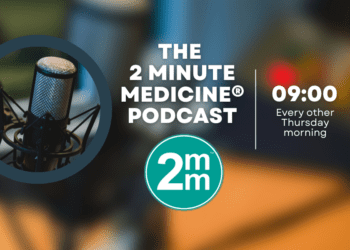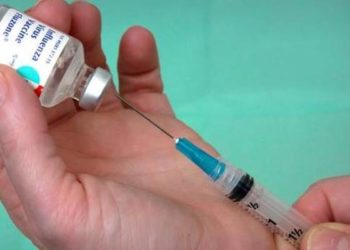Quadrivalent recombinant influenza vaccine noninferior to inactivated vaccine
1. The quadrivalent recombinant influenza vaccine (RIV4) was noninferior when compared with the quadrivalent inactivated influenza vaccine (IIV4) for immunogenicity.
Evidence Rating Level: 1 (Excellent)
Study Rundown: Seasonal influenza vaccines have recently been transitioned to a quadrivalent, recombinant formulation to provide broadened protection against 2 antigenically distinct influenza type B lineages in addition to the conventional type A subtypes. In adults, the RIV4 has shown greater efficacy in protecting against laboratory-confirmed influenza-like illness compared to the IIV4. While recombinant vaccines contain a portion of DNA encoding for a viral antigen, an inactivated vaccine contains a killed virus. Additionally, recombinant vaccines circumvent the need for egg-based incubation and therefore take less time to produce and do not contain genetic mutations that may reduce effectiveness.1 In this phase 2 randomized controlled study, researchers evaluated the immunogenicity and safety profile of the RIV4 compared to the IIV4 in pediatric patients 6-17 years of age. In light of prior trial data, this age range was selected based on the hypothesis that immunogenic responses may be stronger in children who have already been primed by previous vaccinations or infections. The RIV4 satisfied noninferiority criteria for all 4 antigenic lineages based on HAI GMTs, and satisfied noninferiority criteria for all antigenic lineages based on HAI SCRs with the exception of the Influenza-B Victoria Lineage. The safety profile was comparable between both vaccination groups. Within 7 days following the injection, the most common reactions included pain at the injection site, myalgias, and headache. Limitations included a smaller sample size for the younger cohort, resulting in wider confidence intervals. This study has shown that the RIV4 is comparable to IIV4 in terms of safety and immunogenicity in pediatric patients, but further trial data is needed to assess efficacy.
Click to read the study published today in Pediatrics
Relevant Reading: The rationale for the quadrivalent influenza vaccines
In-Depth [randomized controlled trial]: This phase 2 randomized controlled trial included a total of 219 subjects and was conducted at 5 outpatient research centers. An older cohort (N=159) of subjects 9-17 years of age was initially enrolled between November 2013 to December 2013 and once safety data from this cohort had been reviewed, a younger cohort (N=60) of subjects 6-8 years of age between were enrolled during December 2013 to January 2014. Subjects were excluded if they had serious underlying medical conditions, acute febrile illness, contraindications to study vaccines and/or were on immunosuppressive therapies. Subjects received either the RIV4 or IIV4, with the younger cohort receiving 2 doses a month apart. Immunogenicity was assessed with HAI antibody GMTs and SCRs at 28 days after vaccination completion, and an additional 56-day point for the younger cohort. Noninferiority was satisfied if the ratio between the upper limit of the confidence intervals for the GMTs of the IIV4 and RIV4 was ≤1.5. The RIV4 showed noninferiority immunogenicity for GMT ratios of all 4 antigenic lineages covered, but for SCRs, showed noninferiority for all lineages except the Influenza B-Victoria Lineage. For the younger cohort that received 2 doses of vaccination, antibody responses to the first dose were comparable to those after the second dose. The safety profiles of RIV4 and IIV4 were similar, with the most common side effect being pain secondary to injection. Other side effects during the first 7 days following injection included myalgia, fatigue and headache – during this time, fevers occurred in <5% of participants and none were >102F. In terms of serious adverse events, no deaths were reported. Out of 219 subjects, 203 (92.6%) completed the 6-month follow-up for evaluation of further vaccine-related adverse events, of which there were none reported.
Reference:
1 Dunkle LM, Izikson R, Patriarca P, Goldenthal KL et al. Efficacy of recombinant influenza vaccine in adults 50 years of age or older. N Engl J Med. 2017; 376: 2427-2436.
Image: PD
©2018 2 Minute Medicine, Inc. All rights reserved. No works may be reproduced without expressed written consent from 2 Minute Medicine, Inc. Inquire about licensing here. No article should be construed as medical advice and is not intended as such by the authors or by 2 Minute Medicine, Inc.






